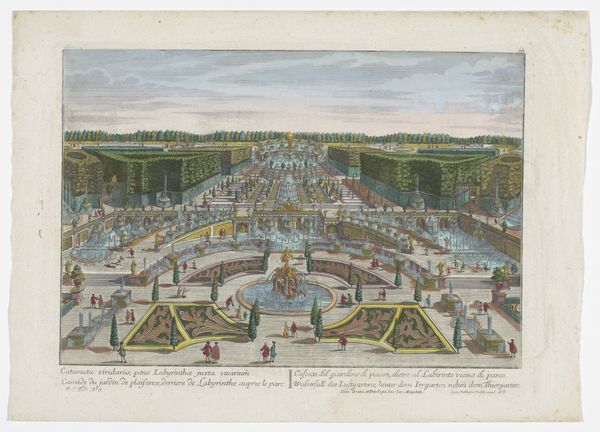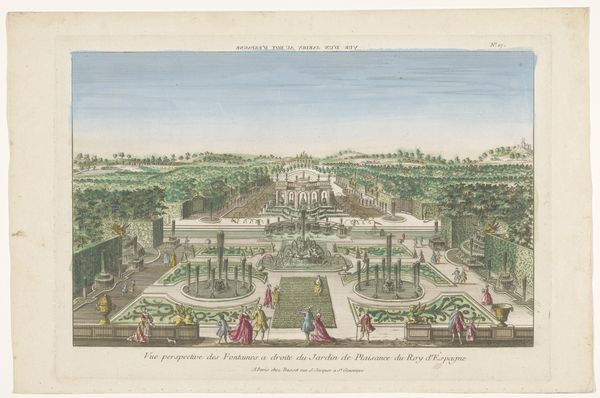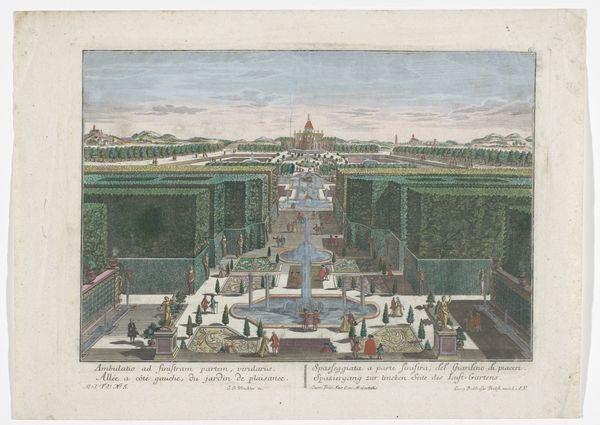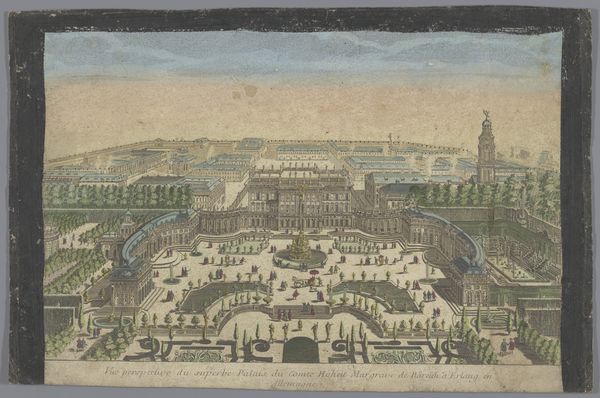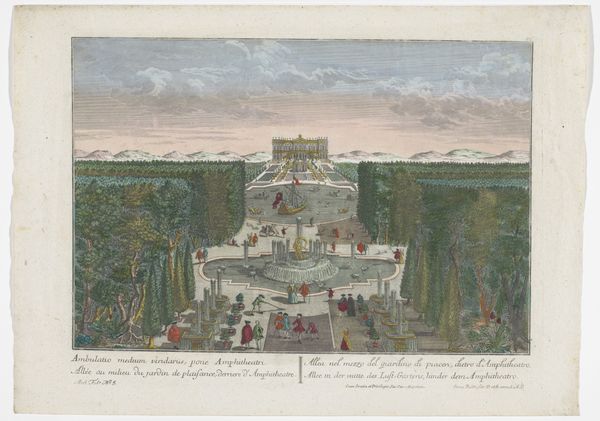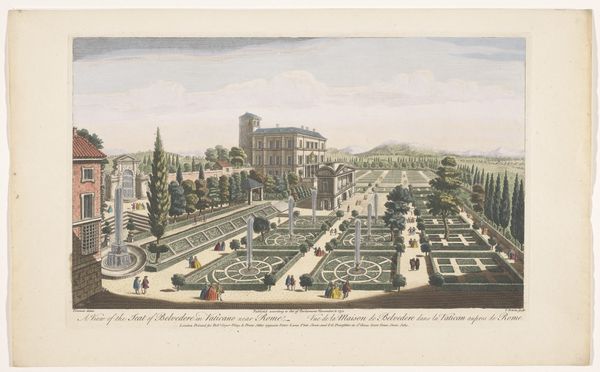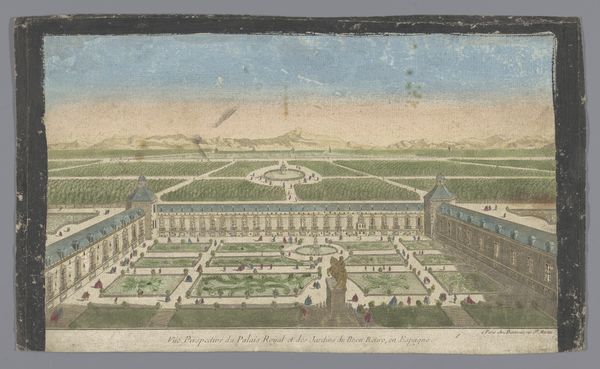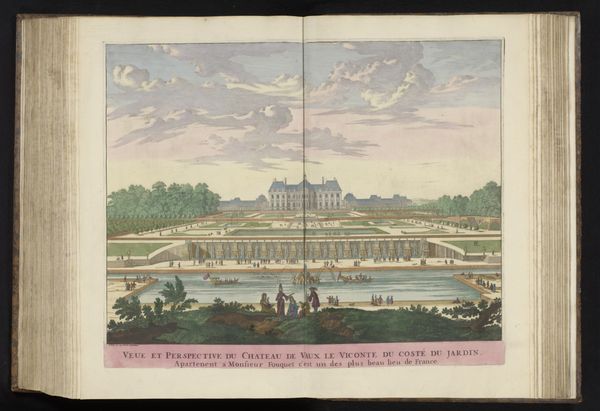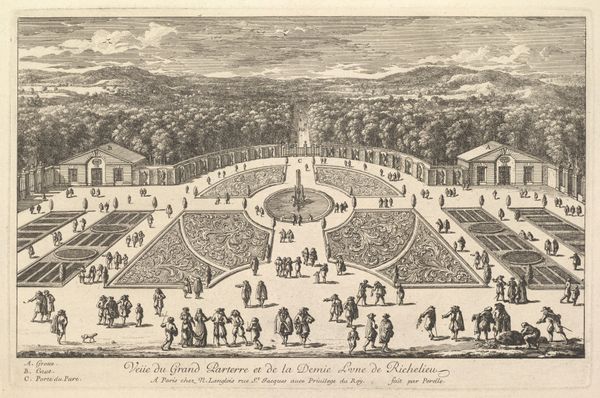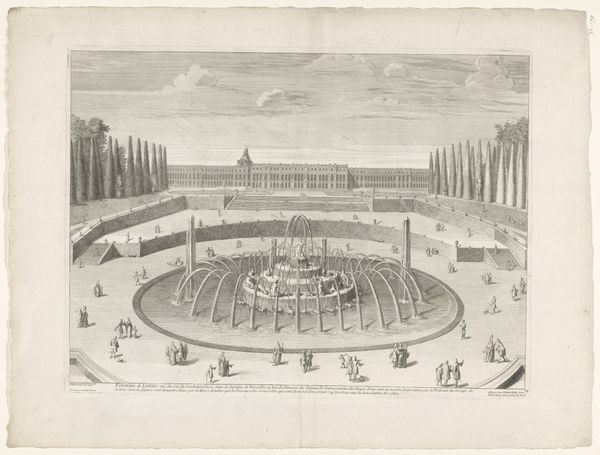
Gezicht op een laan met fonteinen aan de rechterzijde van een tuin 1742 - 1801
0:00
0:00
georgbalthasarprobst
Rijksmuseum
Dimensions: height 306 mm, width 418 mm
Copyright: Rijks Museum: Open Domain
Georg Balthasar Probst created this view of a garden avenue with fountains in the 18th century using etching and hand-applied color. The printmaking process begins with a metal plate. Lines are bitten into the surface with acid, then inked and printed onto paper. The technique allowed for the swift reproduction of images, making them accessible to a wider audience. The addition of color by hand transforms a mass-produced print into a unique piece of art. This print provides a glimpse into the leisure and pleasure of the wealthy during the 1700s, reflecting the rise of consumer culture. The very process of creating this print involved workshops with skilled labor and a market hungry for images, linking artmaking to broader economic trends. By focusing on the materials, processes, and context of this work, we can see how it blurs traditional distinctions between art, craft, and commerce.
Comments
No comments
Be the first to comment and join the conversation on the ultimate creative platform.
